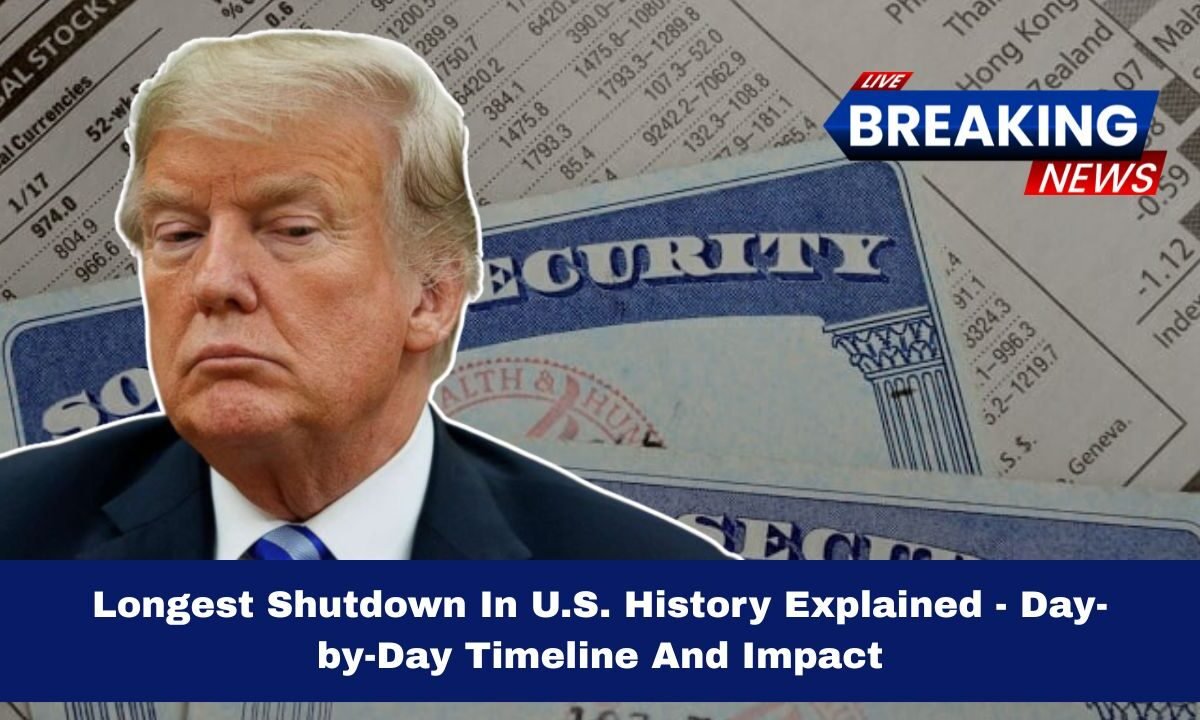Imagine waking up one morning and realising that many government services you rely on are suddenly paused. That is what happened when the federal government in the US entered a shutdown at midnight on October 1.
Lawmakers had failed to pass the necessary funding bills, and as a result, many services stopped, and federal workers faced serious uncertainty.
This step has now become the longest in US history. However, there is hope: the Senate recently passed legislation that could end the shutdown this week.
In this article, we will break down the key dates and events of the shutdown, explain what’s at stake, and look at what might happen next. The goal is to help you understand clearly, in simple language.
What Triggered the Shutdown?
At its heart, this step began because the government did not get the money it needed to keep operating. When the funding bills did not pass by the deadline, the government had to shut down certain services. That meant:
- Some programmes and services were turned off.
- Many federal workers were put on furlough (temporary leave).
- If the shutdown continues, more programmes may stop and even some federal workers could be fired.
Key Dates and Events
Table of Major Dates
Here is a clear table showing the important dates you need to know:
| Date | Event | Why it matters |
|---|---|---|
| October 1 | Shutdown started at midnight | Funding bills were not passed |
| After Oct 1 | Services went dark, furloughs began | Impact on workers and programmes |
| Recently | Senate passed legislation to end shutdown | Possible end to the shutdown this week |
What Happens in the House and the Senate?
Understanding how the funding process works helps explain why the shutdown lasted so long.
- In the House of Representatives, a funding bill needs a simple majority (more than half) to pass.
- In the Senate, they need 60 votes to move a funding measure forward. That means they need more support, including from both parties.
- Currently, Republicans favour passing a continuing resolution — this means keeping government funding at the existing levels for a short period while discussions continue.
- Democrats are pushing to include bigger changes: extending Obamacare subsidies that are set to expire next year, reversing planned Medicaid cuts, and adding other provisions.
What Are the Stakes?
When the government is shut down:
- Many programmes stop or operate at essential-services only.
- Federal workers might not get paid until funding returns.
- Some contracts may be paused.
- The longer the shutdown goes on, the more major the impact: more layoffs, more disruption.
- If one party insists on big policy changes (like Obamacare or Medicaid) as part of the funding bill, it can delay the end of the shutdown.
What Could Happen Next?
Here are a few possible paths forward:
- The Senate’s legislation could pass both houses and be signed by the President — ending the shutdown this week.
- A compromise might be reached: a short-term funding bill (continuing resolution) that gives both parties time to negotiate the bigger issues.
- If no deal is reached, the shutdown could drag on longer, affecting more programmes and people.
The government shutdown that began on October 1 is a major event because it affects services, workers, and the public. With the Senate now moving to approve legislation, there is hope for an end soon.
However, the complexities of funding bills, the differing priorities of both parties, and the high bar in the Senate mean that it could still take time.
By understanding the key dates, what is required in each house, and what’s at stake, we can see clearly why the shutdown happened and what might happen next. It’s important for every citizen to follow this closely, because government funding affects things that matter to us all.
FAQs
What is a government shutdown?
A government shutdown happens when the government does not get the required approval to spend money, so many services stop and workers may not be paid.
What is a continuing resolution?
A continuing resolution is a short-term law that keeps government funding at current levels so the government can keep working while bigger issues are sorted out.
Why do some lawmakers want to attach healthcare changes to a funding bill?
Because they believe that important programmes like Obamacare subsidies and Medicaid should be protected or improved, and they see the funding bill as the time to secure those changes.




